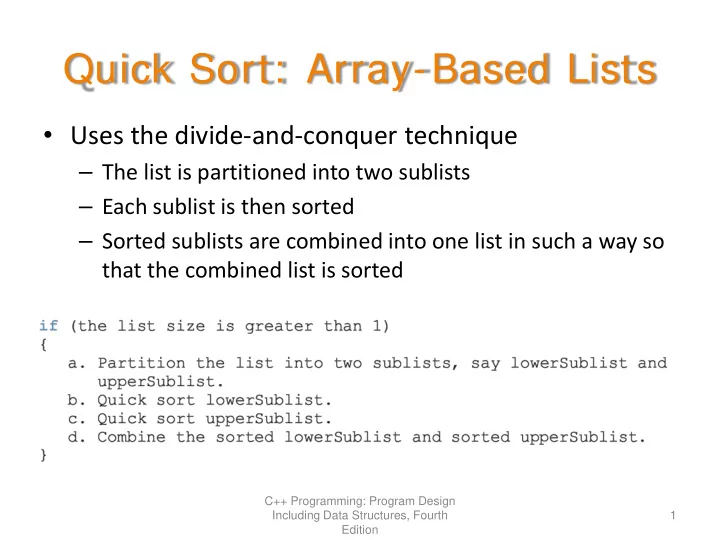

Quick Sort: Array-Based Lists • Uses the divide-and-conquer technique – The list is partitioned into two sublists – Each sublist is then sorted – Sorted sublists are combined into one list in such a way so that the combined list is sorted C++ Programming: Program Design Including Data Structures, Fourth 1 Edition
Quick Sort: Array-Based Lists (continued) • To partition the list into two sublists, first we choose an element of the list called pivot • The goal is to re-arrange the list so that the pivot divides the list into: lowerSublist and upperSublist – The elements in lowerSublist are < pivot – The elements in upperSublist are ≥ pivot 2
Quick Sort: Array-Based Lists (continued) • Partition algorithm (we assume that pivot is chosen as the middle element of the list): – Determine pivot ; swap it with the first element of the list – For the remaining elements in the list: • If the current element is less than pivot, (1) increment smallIndex , and (2) swap current element with element pointed by smallIndex – Swap the first element ( pivot ), with the array element pointed to by smallIndex C++ Programming: Program Design Including Data Structures, Fourth 3 Edition
Quick Sort: Array-Based Lists (continued) • Step 1 determines the pivot and moves pivot to the first array position • During the execution of Step 2, the list elements get arranged C++ Programming: Program Design Including Data Structures, Fourth 4 Edition
Quick Sort: Array-Based Lists (continued) C++ Programming: Program Design Including Data Structures, Fourth 7 Edition
Analysis: Quick Sort C++ Programming: Program Design Including Data Structures, Fourth 8 Edition
Recommend
More recommend